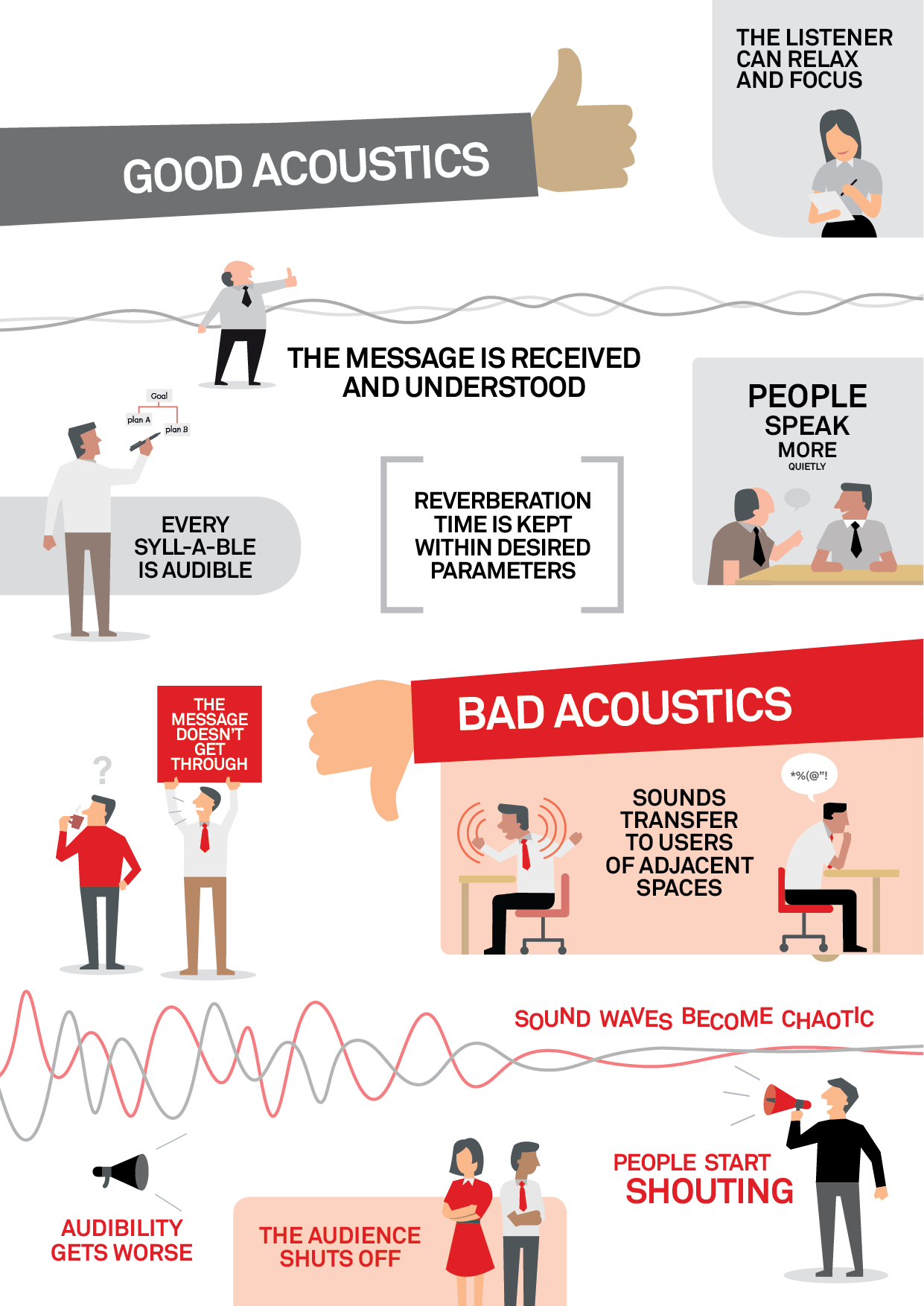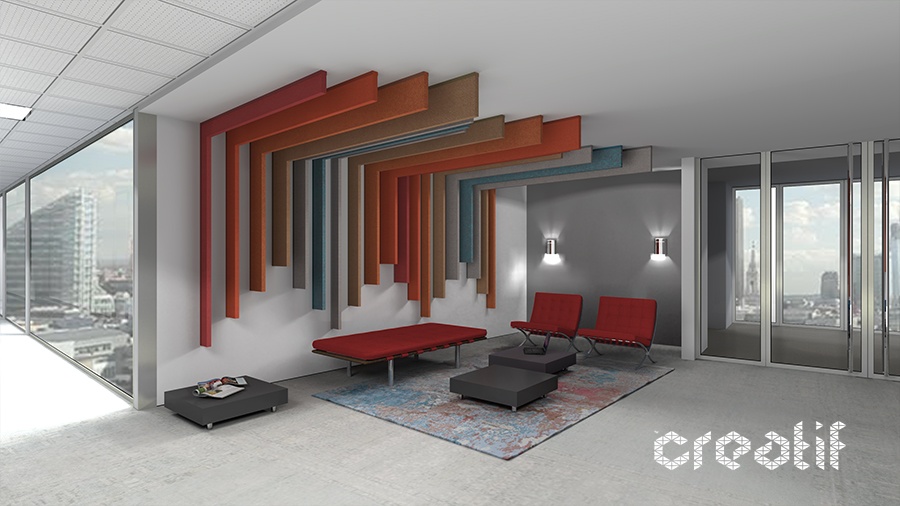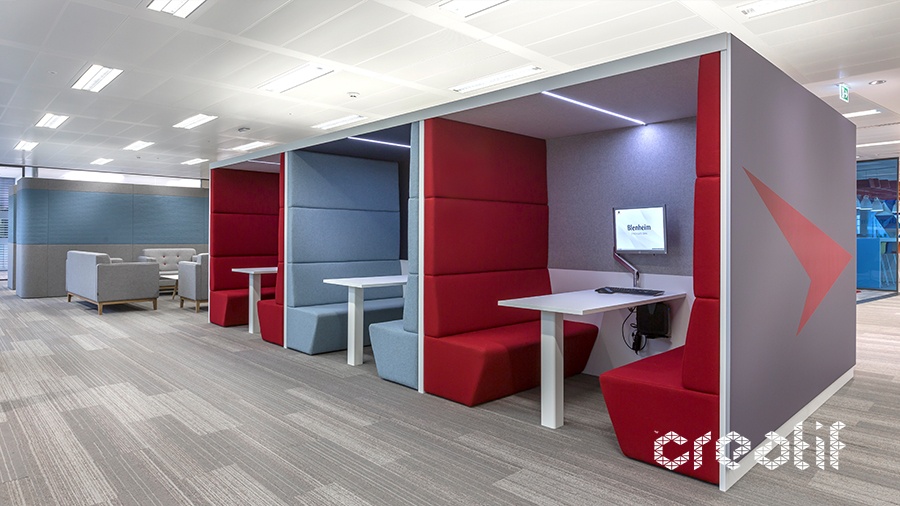
|
In case you missed it, workplace furniture specialist Creatif hosted an engaging seminar within their stylish London showroom on the subject of acoustics within the workplace. Hosted in Clerkenwell on 26th June 2018, Managing Director Dwight Bailey spoke to attendees on the complexity of workplace acoustics, provided insight as to how sound can be measured and the best way to implement acoustic solutions. If you weren’t able to attend on the day, or are simply looking to refresh your memory on the insights provided then read on to discover more about ‘sound... it’s all around you.’ Noise can be defined as ‘unwanted noise’. How often are we subjected to unwanted noise in the workplace? Phones ringing, people talking, machinery whirring or clicking away – it’s inescapable. Creatif are aware of this acoustic complexity and know that people struggle with the polar opposite of noise: silence. A deafening silence in a library can be equally as loud as the barrage of sound in an office. Sound affects us in 4 ways:
In order to quantifiably improve the workplace, Creatif create products that reduce the echo, reverb and noise distractions. This is why extensive research has gone in to optimum workplace acoustics and materials that will benefit employees. Is sound really that important? According to the gov.uk website, it states that the annual cost of urban road noise alone is £7-£10 billion and that a side effect of this type of noise is “productivity – through distraction, fatigue and interrupting communications noise can have a negative impact on productivity.” When there are acoustic problems, people usually do one of the following: put on headphones or begin raising their voices to match the surrounding volume, and invariably end up shouting to those around them. Before we discuss the ABC of acoustic control, first let’s discuss how we measure sound. Sound is measured in decibels or ‘dB’. To give you relatable examples, these are the typical measurements for loud sounds:
With an average office, you always want to be aiming for 45 dB, which is a pleasant environment to work in without being distracting. So how do offices acquire this acoustic control to get to the preferred 45dB? Follow the ABC: A – Absorbency Absorbency: For sound to be ‘absorbed’, you need to stifle its direction of travel. Creatif use multiple layers, laboratory tested and environmentally friendly, to prevent the sound waves from travelling further than intended. For offices that don’t want to compromise on style, Creatif created ‘acoustic art’, a Class A (the highest absorbency rating) wall art that offers optimum acoustic absorption. Wall panels and ceiling rafts also soak up noise so that it doesn’t filter through, whilst maintaining a contemporary design aesthetic to suit the room. |
‘Tempo’, Creatif’s acoustic wall and ceiling slats, trap sound within carefully structured raised fabric. Tempo works well in ‘meet and greet’ or ‘touchdown’ areas and successfully absorb 95% of sound. Many design and build fitout companies use timber slats which are atrocious for sound absorption – only 20% of sound gets absorbed by wood. Creatif only ever use the highest absorbent fabrics.
Block: ‘Blocking’ deals with noise at the source. Creatif’s fabric walls give ‘acoustic integrity’ by blocking as much noise as possible, without having a solid, static wall. To prevent people feeling caged in to set rooms, block fabric can act as a clear room divider yet manage sound levels and keep conversations in the right space. Creatif designed ‘Whisper acoustic panels’ which are not only an effective way of reducing unwanted noise, but are made out of recycled-bottle polyester. Whilst it is possible to use glass fibre polyester, Creatif prefer eco-friendly materials wherever possible.
Cover: For privacy or specific areas that need maximum noise retention, ‘covering’ works as a layer of sound insulation. This takes the reverb out of the room; sound gets absorbed instantly meaning any lost sound doesn’t reverberate around the room. When talking about a room’s ‘reverb time’, you need to think about the time it takes for sound to decay. By carefully selecting materials, you can manage your reverb time. Creatif can anticipate reverb time by taking in to account the materials used in a room, such as glass, plasterboard, fabric, but also common factors like area space and how many people use the room. For example, Creatif devised the ‘Cube’: a microenvironment ideal for studying or private conversations. People in Cubes experience less than 15% reverb time, alongside fewer visual and audio distractions. They provide workers a much-needed place to concentrate.
When Creatif design products, there are various questions in the thought process:
Creatif have extensive experience when it comes to dealing with noise pollution, and have created quality assured, laboratory tested products that counterbalance the rich tapestry of abuse workers are subjected to in the workplace. Sound is all around us, and instead of loud noises becoming a work distraction or another costly statistic, Creatif can provide valuable insight on how to implement acoustic solutions that will demonstrably improve the noise levels in the workplace. For more Creatif Talk seminars click here, or get in touch with Creatif to discuss the acoustic complexities in your office. |



